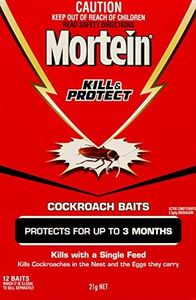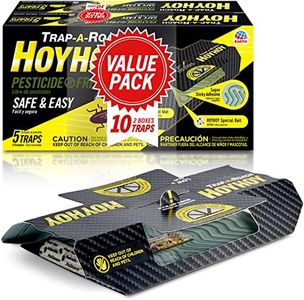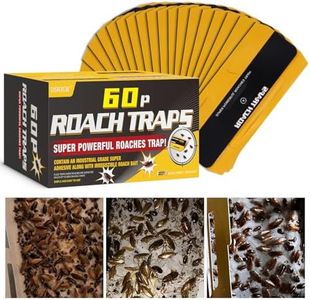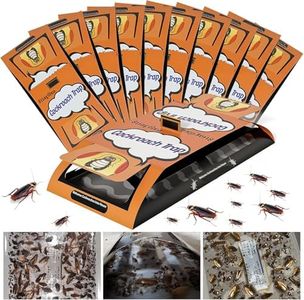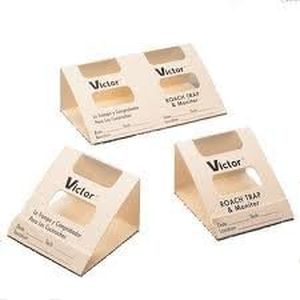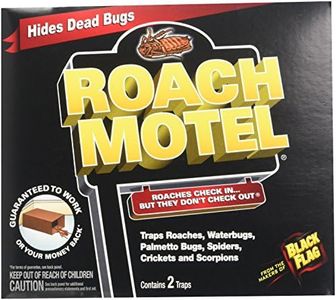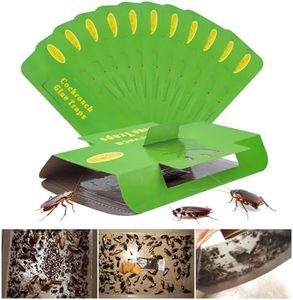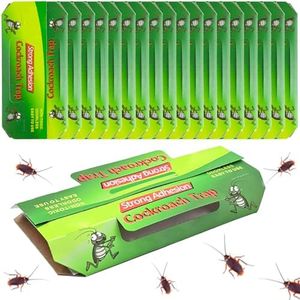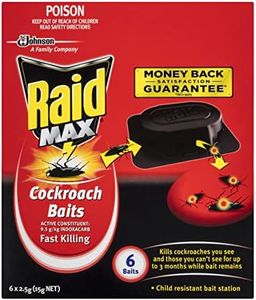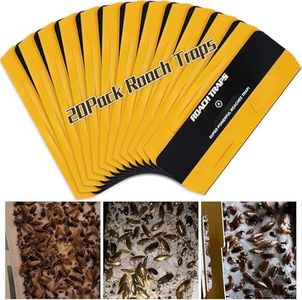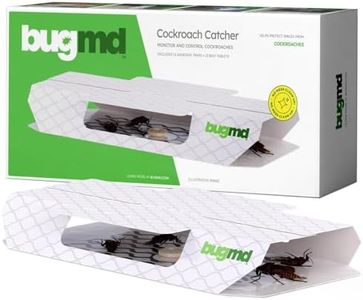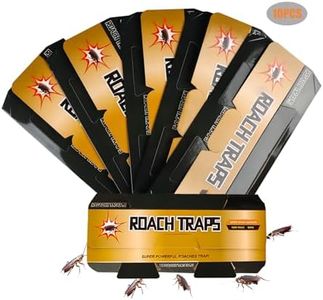We Use CookiesWe use cookies to enhance the security, performance,
functionality and for analytical and promotional activities. By continuing to browse this site you
are agreeing to our privacy policy
10 Best Roach Traps
From leading brands and best sellers available on the web.By clicking on a link to a third party's website, log data is shared with that third party.
Buying Guide for the Best Roach Traps
Choosing the right roach trap can help keep your home free of unwanted pests in a safe and effective way. There are various types of traps available, each suited to different environments and needs. To find the best option for you, it's important to understand the main features and how they fit your specific situation, like the location of the problem, the scale of infestation, and any safety concerns you may have if you have pets or children.Trap MechanismThe trap mechanism refers to how the trap actually captures the roaches. Common types include glue traps, bait stations, and electronic traps. Glue traps use a sticky surface to catch roaches when they walk across them, while bait stations attract roaches with a food source laced with poison that they bring back to their nest. Electronic traps use a mild electric charge to kill roaches. Glue traps are straightforward and easy to monitor but best for detecting and catching small numbers. Bait stations are excellent for larger or hidden infestations as they target colonies over time. Electronic traps are reusable and avoid chemicals, making them safer around children and pets. To choose the right mechanism, consider your comfort level with poison or chemicals, the severity of your infestation, and whether you need ongoing monitoring or quick results.
Size and PlacementSize and placement refer to both how big the trap is and where it can be put. Smaller traps are less noticeable and fit in tight spaces like behind appliances or under sinks, but they may need to be replaced more often if you have a large problem. Larger traps capture more roaches at once and are better for bigger infestations or open spaces. Placement is crucial since roaches like dark, hidden places and will follow the edges of rooms or under furniture. Choosing the right size and planning the placement helps ensure the traps are effective without disrupting your living space.
SafetySafety refers to how secure the trap is for children and pets in the household. Some traps use poisons or strong adhesives, while others are sealed or use no chemicals at all. If you have young children or pets, pick traps that are enclosed and cannot be easily opened or tampered with, and avoid those with harmful chemicals where accidental contact might occur. Always read the safety instructions and consider who might have access to the trap locations in your home.
Ease of Use and DisposalEase of use and disposal means how simple it is to set up the trap, check if it's full, and get rid of captured roaches. Some traps come ready to use and need only basic set up, while others may require handling bait or replacing components. Disposable traps are thrown away in the trash when full, making cleanup easy but possibly less eco-friendly. Reusable models need to be emptied and cleaned, which may not be pleasant but saves money and waste in the long run. Choose the type that fits your comfort with handling pests and your preferences for easy cleanup.
Effectiveness DurationEffectiveness duration describes how long a single trap can work before it needs to be replaced or refreshed. Some traps may only last a few days to a week, especially glue traps that fill up quickly. Others, like bait stations, can stay active for several weeks and keep attracting roaches over time. If you have a persistent problem or want lower maintenance, look for traps with a longer effectiveness duration. However, for monitoring or a small problem, short-term traps may be just right.
